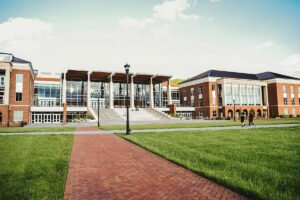
August 12, 2019; Inside Higher Education, “Opinion”
Policymakers and politicians have proposed a variety of approaches to making public colleges and universities affordable—even free. The wisdom of offering no-cost tuition at higher education institutions has sparked some of the loudest debate; less discussed is the impact of increasing support only for students who will attend public colleges and universities. Left out, it appears, is much thought about the important role nonprofit colleges and universities play.
Currently, a mix of public and private institutions offer post-secondary education. Of the 17.5 million students who were enrolled in a post-high-school academic program last spring, 3.8 million attended a four-year, private nonprofit college or university. Writing for Inside Higher Education, Claude O. Pressnell Jr., president of the Tennessee Independent Colleges and Universities Association, expressed his concern that ignoring nonprofit schools is neither good policy nor in the interest of students.
“Looking across the spectrum,” Pressnell writes, “some students flourish in a more intimate/mentoring environment that a private college provides, while other students thrive in a large public university setting.”
Sign up for our free newsletters
Subscribe to NPQ's newsletters to have our top stories delivered directly to your inbox.
By signing up, you agree to our privacy policy and terms of use, and to receive messages from NPQ and our partners.
Private schools are often mischaracterized as schools for the rich and socially elite. In truth, they generally partner with public institutions to create a national network of higher education. As detailed in a recent study by the Brookings Institution’s Matthew M. Chingos:
The typical private, non-profit college in the U.S. is surprisingly similar to the typical public college on several dimensions, and on characteristics that differ on average there is still substantial overlap in the distributions of individual colleges. On average, private colleges are not much more selective than public colleges…the percentage of low-income students is similar across the two sectors nationwide—8 percent at privates vs. 9 percent at publics.
Pressnell cites data from the National Center for Education Statistics which show that though their populations are very similar to their public counterparts, private nonprofit institutions not only provide a broader choice of educational environments, they also more than hold their own in outcomes:
- “65.1 percent of students attending private nonprofit colleges and universities graduated in four years or less, compared to 46.4 percent of students attending public four-year campuses.”
- “Students attending a private nonprofit college or university graduated with an average total debt of $32,500 compared to $27,900 at a public university. Even with $4,600 more in debt, the private nonprofit university students graduate earlier, and critically, enter the workforce faster.”
- “51 percent of private college graduates had secured a salaried position within one year after graduation compared to 45 percent of those graduating from a public university.”
There’s a clear need to lowering the financial barriers that keep many students from post-high-school education. At the same time, as NPQ has found, it remains important that private schools’ student bodies reflect the general population. Affordability and equal access need not be exclusive: “The challenge is to be thoughtful and deliberate in developing policies to empower students, not limit them.” The current mix of public and nonprofit colleges and universities is positioned to do this, if supported by good policy, adequate funding, and responsible oversight.—Martin Levine











